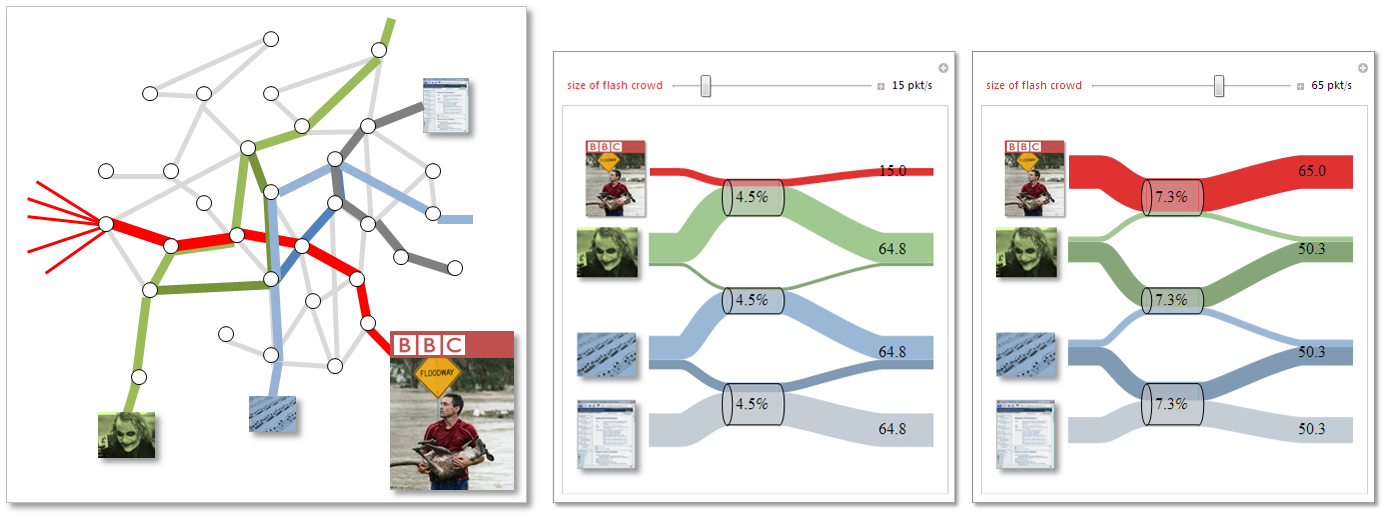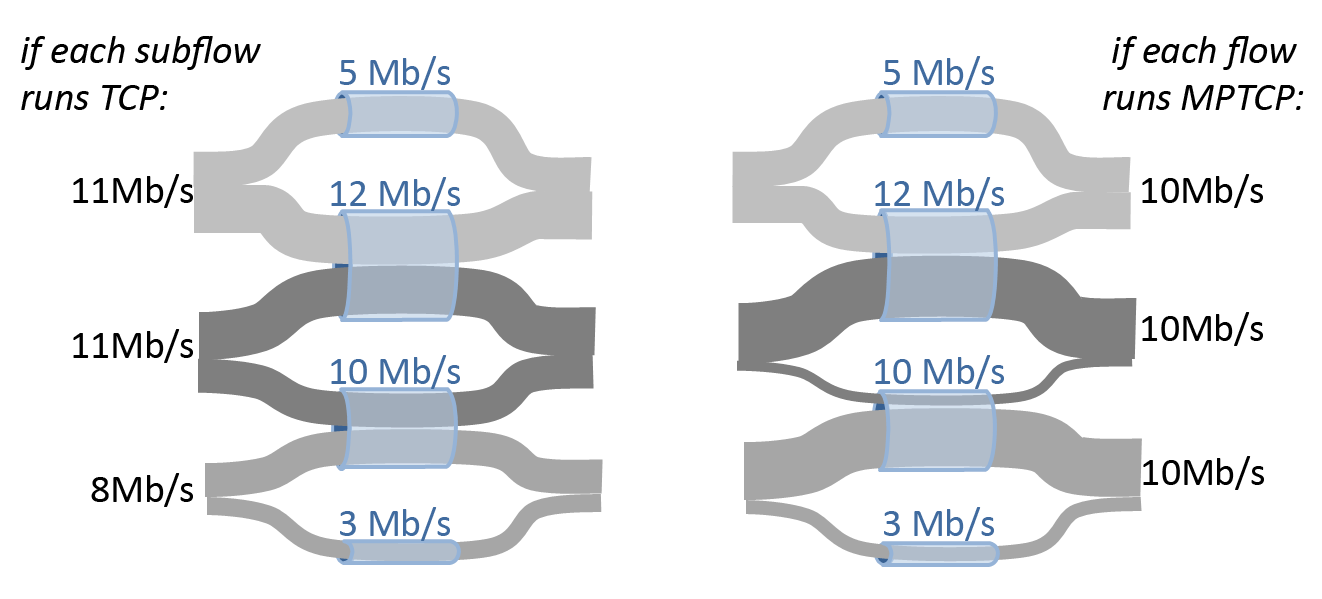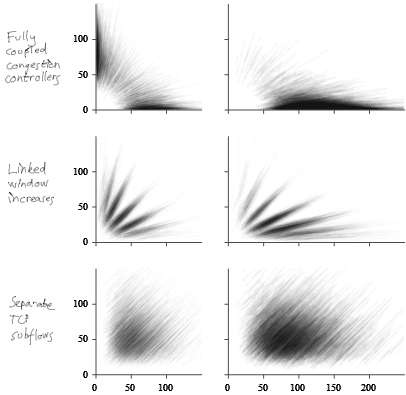These plots show window sizes, for a simulation of multipath TCP flow
running over two paths. In the left hand plots, the two paths have
equal loss rate
(
p1=
p2=0.05%).
In the right hand plots, the two paths have unequal loss rates
(
p1=0.02%,
p2=0.05%). The
plots show window size on path 1 on the horizontal axis, and window
size on path 2 on the vertical axis.
In the bottom diagrams, we simulate two independent copies of
TCP on the two paths: then, no matter how uncongested link 1 is, the
flow sends just as much traffic on link 2.
In the top diagrams, we
simulate a coupled congestion controler, which links window increases and
decreases between the two subflows: then, when the links are equally
congested it flaps between the two paths, and when one link is better then
it shifts all traffic onto the better link.
Is it possible to get the traffic-shifting capability of the fully
coupled controller, while retaining the stability of uncoupled TCPs?


